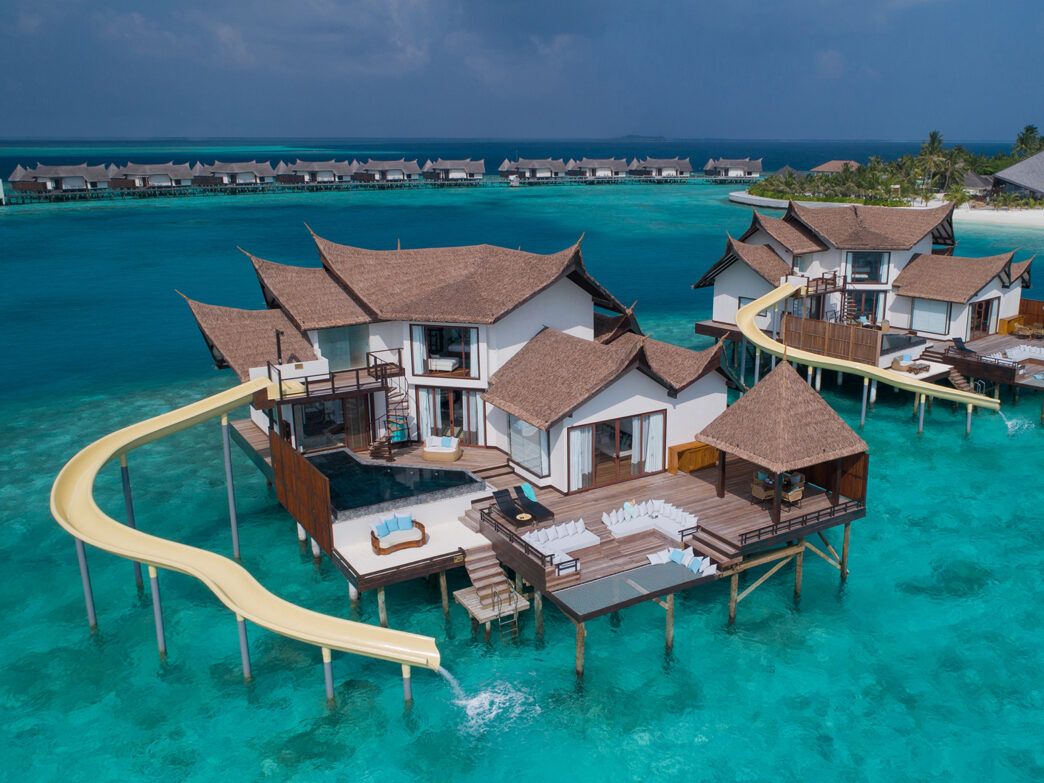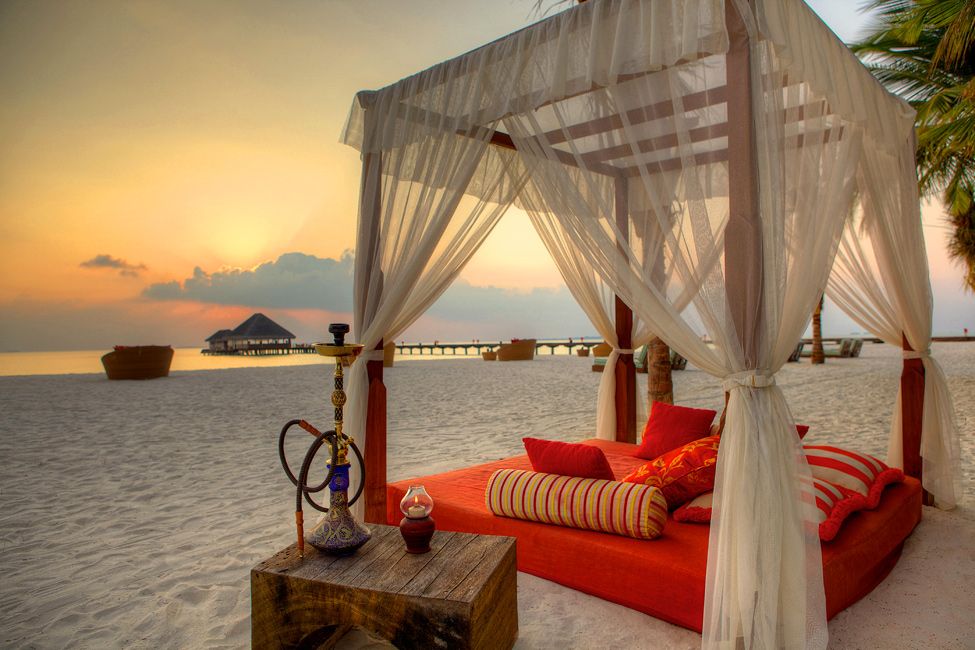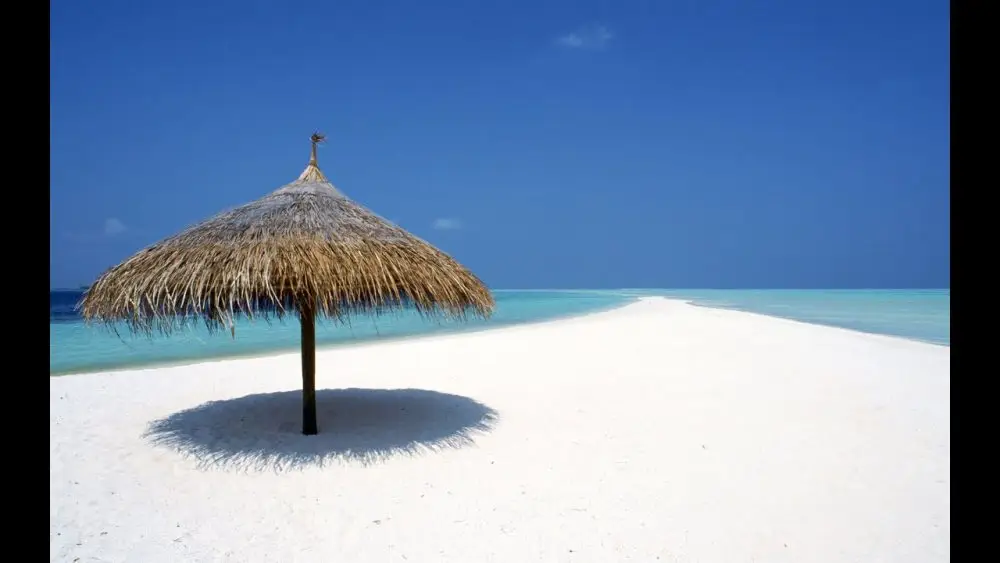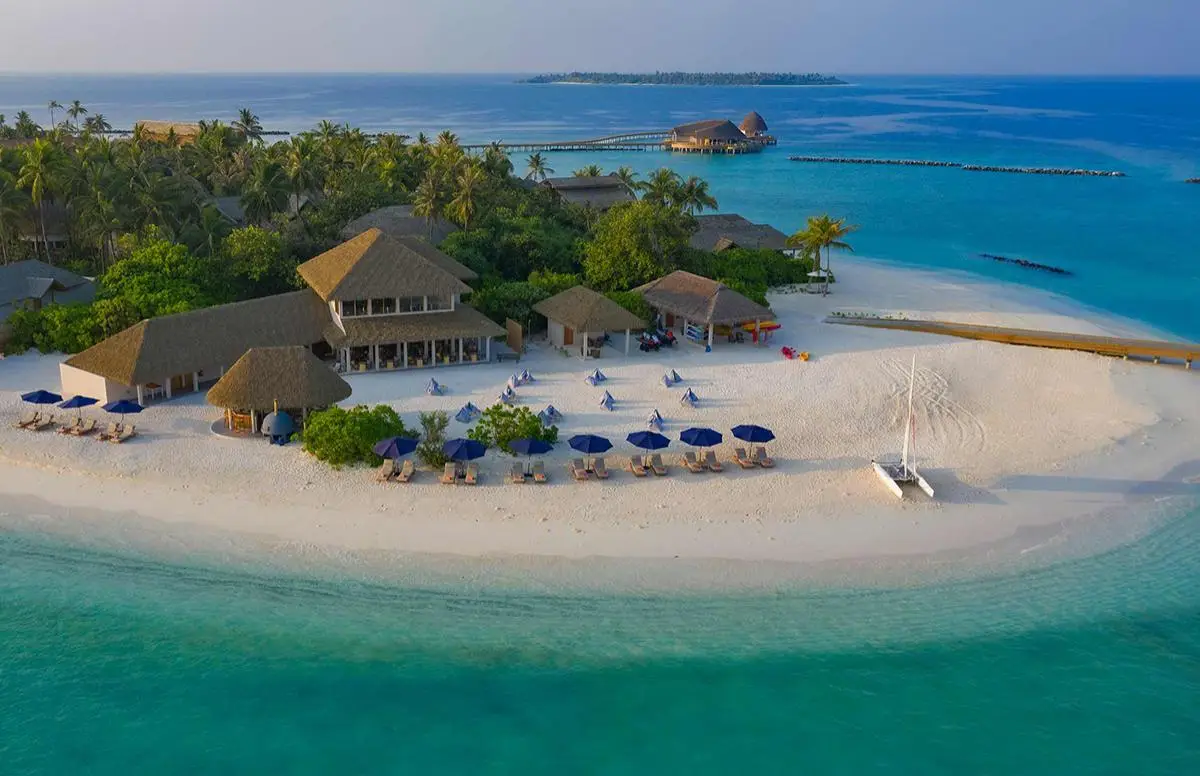Holidays in the tropical archipelago have long been synonymous with luxury, seclusion and pristine nature. Every year, thousands of travellers choose this corner of the Indian Ocean for romantic getaways, beach siestas and underwater adventures. Let’s take a look at a few reasons why you should go to the Maldives and what makes it an ideal destination.

Unique nature and paradisiacal landscapes
Maldives – sandy beaches, clear waters and azure lagoons surrounded by coral reefs. The archipelago includes more than 1200 atolls, many of which remain uninhabited, which means no fuss and no noisy crowds of tourists.
The distinctive feature of the territories is the endless white-sand beaches, soft sand and turquoise sea, creating ideal conditions for relaxation. Sunsets here look like a postcard, while tropical landscapes and coconut palms complete the picture. Paradise holidays in the Maldives are not just words, but a reality for those who dream of being on the island of dreams.
Total privacy
 One of the main reasons why it is worth visiting the Maldives remains the original concept of a holiday. There are no crowded beaches or noisy cities. Each hotel is located on a separate island, which creates a unique atmosphere of privacy and tranquility. It is an ideal choice for couples and honeymooners, as many resorts offer remote villas with private pools, personalised service and ocean views. Luxurious bungalows located right on the water allow you to wake up to the sound of the waves and enjoy breakfast on the terrace.
One of the main reasons why it is worth visiting the Maldives remains the original concept of a holiday. There are no crowded beaches or noisy cities. Each hotel is located on a separate island, which creates a unique atmosphere of privacy and tranquility. It is an ideal choice for couples and honeymooners, as many resorts offer remote villas with private pools, personalised service and ocean views. Luxurious bungalows located right on the water allow you to wake up to the sound of the waves and enjoy breakfast on the terrace.
Best beaches and turquoise lagoons
Beach holidays in the Maldives: crystal clear water, white sand and no rocks or seaweed. The ocean is so clear that even at a depth of a few metres you can see marine life.
The islands are free of tides and strong waves, making the beaches ideal for swimming. The tropical climate allows you to spend the whole day in the sun, enjoying the warm sea and comfortable water temperatures of around 27-30 °C all year round. The resorts offer everything you need: sun beds, cocktail bars, lounges and spas located right on the beach.
Underwater world and ideal conditions for snorkelling
Another reason to go to the Maldives is that the coral reefs surrounding the islands are considered some of the most beautiful in the world. More than 2,000 species of marine life can be found here, including:
- sea turtles,
- stingrays,
- dolphins,
- reef sharks,
- schools of tropical fish.
Diving and snorkelling are the activities for which thousands of tourists return here again and again. Almost every island has its own house reef, accessible directly from the beach.
Ideal climate all year round
The archipelago is located close to the equator, which guarantees stable air and water temperatures throughout the year. The annual average is between +27 and +32°C, and the warm sea can be swum in even at night. The rainy season is short and inconspicuous – showers are short-lived and cloudy days are rare.
The best cuisine and exotic dishes
The local cuisine is another reason to go to the Maldives: a combination of fresh seafood, tropical fruits and traditional spices. Foodies can savour:
- fresh lobster, shrimp and tuna,
- coconut curry and spicy soups,
- tropical fruits: mango, papaya, passion fruit,
- exotic cocktails based on coconut milk and lime.
Restaurants in the Maldives offer a variety of world cuisines, from Asian and Mediterranean to French gastronomy. Of particular note are the underwater cafés, where you can enjoy your dinner while watching sea life through glass walls.
Unique spa treatments: total relaxation in a tropical paradise
Each resort here offers exclusive spa programmes focused on restoring balance, improving well-being and relieving stress. A key feature of Maldivian spas is the use of natural ingredients. Coconut milk, seaweed, essential oils and volcanic clay become the basis for care procedures that saturate the skin with beneficial microelements and give a feeling of complete renewal. Massages here go beyond standard techniques, offering guests individual programmes incorporating elements of Thai, Balinese and Ayurvedic treatments.
One of the main reasons to go to the Maldives is the spa cabins, which are located right on the beach or on the water, creating an atmosphere in harmony with nature. The light sea breeze, the sound of the surf and the warmth of the sun enhance the relaxation effect, making each session a unique experience. Personal spa villas are available for those who like to relax in privacy, offering rejuvenating masks, relaxing wraps and healing baths with aromatic oils.
Yoga and sunset meditation are becoming an important part of Maldivian wellness relaxation. Practices are held on special platforms overlooking the ocean, allowing you to immerse yourself in a state of complete tranquillity and restore inner harmony. Group breathing exercises and sound therapy sessions are particularly popular to help relieve stress and tension.
Exclusive excursions and entertainment: opportunities for unforgettable experiences
Catamaran and yacht cruises are a real adventure, especially during sunset. The warm colours of the sky, the golden waves and the leisurely gliding through the water create a unique romantic atmosphere. Many resorts offer customised itineraries that include open ocean swimming, dining under the stars and dolphin watching.
Visiting deserted islands is one of the most unusual holiday options. Very close to the main resort areas, there are small secluded atolls where you can spend a day in complete silence, far from civilisation.
Fishing at dawn is another reason to visit the Maldives, a traditional pastime that not only allows you to try your hand at catching fish, but also to learn about local seafaring traditions. In the Maldives, it is customary to go out into the ocean early in the morning, when the sea is particularly calm. Tuna, barracuda and sailfish are found here, and the catch can be cooked on the beach under the guidance of a chef.
Seaplane flights are the best way to get a bird’s eye view of the archipelago. Breathtaking panoramic views of atolls, reefs and lagoons make this one of the most spectacular adventures. Some itineraries include intermediate landings on uninhabited islands, where you can stop for a picnic or photo shoot.
Excursion programmes are adapted to individual preferences of tourists, offering options for both lovers of active rest and connoisseurs of relaxed pastime. The opportunity to combine natural beauty, comfort and exclusive experiences makes each trip unique.

Conclusion
 From secluded bungalows on the water to shark diving, from relaxing spas to exotic cuisine, here’s why you should go to the Maldives. Here everyone can find the perfect travel format. If you want to immerse yourself in the atmosphere of a tropical paradise, enjoy peace and world-class comfort, the archipelago is the best choice.
From secluded bungalows on the water to shark diving, from relaxing spas to exotic cuisine, here’s why you should go to the Maldives. Here everyone can find the perfect travel format. If you want to immerse yourself in the atmosphere of a tropical paradise, enjoy peace and world-class comfort, the archipelago is the best choice.
 en
en  ar
ar  de
de  es
es  fr
fr  nl
nl  hi
hi  it
it  pt
pt  el
el 



